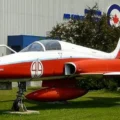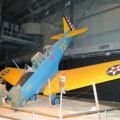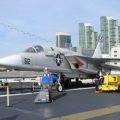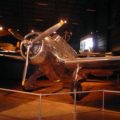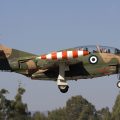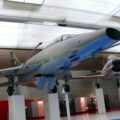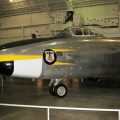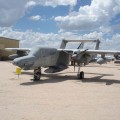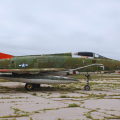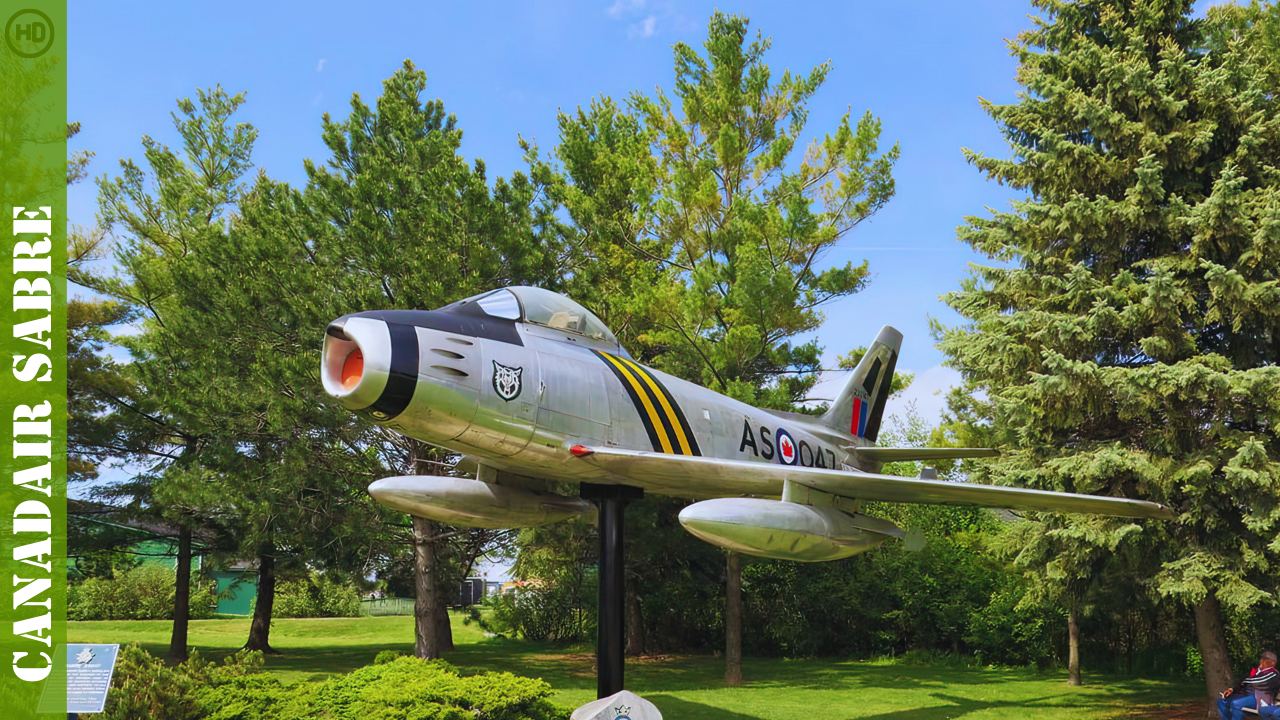
Canadair Sabre | |
|---|---|
| Paese | Canada |
| Ruolo | Combattente |
| Primo volo | Il 9 agosto 1950 |
| Costruito | 1815 |
Le Canadair Sabre Il era un caccia a reazione costruito dalla Canadair su licenza della North American Aviation. Una variante dell'F-86 Sabre nordamericano, fu prodotto fino al 1958 e utilizzato principalmente dalla Royal Canadian Air Force (RCAF) fino a quando non fu sostituito con il Canadair CF-104 nel 1962. Diverse altre forze aeree operarono anche l'aereo.
fonte: Canadair Sabre su Wikipedia
| Canadair F-86E mk.6 Sabre Walk Around | |
|---|---|
| Fotografo | Cees Hendriks |
| Localizzazione | Inconsapevole |
| Foto | 41 |
| Canadair Sabre Mk.V Walk Around | |
|---|---|
| Fotografo | Vladimir Jakubov |
| Localizzazione | Museo del Reggimento Ontario |
| Foto | 70 |
Vedi anche:
Le Canadair Sabre era un aereo da combattimento sviluppato e prodotto dalla Canadair, una società canadese, su licenza della North American Aviation. Era una variante del North American F-86 Sabre, che fu uno dei caccia di maggior successo della guerra di Corea. Il Canadair Sabre è stato prodotto dal 1950 al 1958 e ha servito principalmente con la Royal Canadian Air Force (RCAF) fino a quando non è stato sostituito dal Canadair CF-104 Starfighter nel 1962. Il Canadair Sabre ha anche prestato servizio con diverse altre forze aeree in tutto il mondo, tra cui la United States Air Force, la Royal Air Force e la German Air Force.
Il Canadair Sabre aveva sei versioni, ognuna con caratteristiche e miglioramenti diversi. La prima versione, il Sabre Mk.1, era simile all'F-86A e aveva un motore turbogetto General Electric J47-GE-13 con 5.200 lbf (23 kN) di spinta. La seconda versione, il Sabre Mk.2, aveva lo stesso motore ma aggiungeva controlli servoassistiti e un piano di coda "all-flying". La terza versione, il Sabre Mk.3, fu la prima ad utilizzare un motore di progettazione canadese, l'Avro Canada Orenda 3 turbogetto con 6.000 lbf (27 kN) di spinta. La quarta versione, il Sabre Mk.4, mantenne il motore General Electric e fu esportata alla Royal Air Force e ad altre forze aeree straniere. La quinta versione, il Sabre Mk.5, utilizzava un più potente turbogetto Orenda 10 con 7.275 lbf (32 kN) di spinta e aveva un'ala più grande per una migliore manovrabilità. La sesta e ultima versione, il Sabre Mk.6, utilizzava un turbogetto Orenda 14 ancora più potente con 7.275 lbf (32 kN) di spinta e aveva due missili aria-aria AIM-9 Sidewinder per una maggiore capacità di combattimento.
Il Canadair Sabre era un caccia veloce e agile che poteva raggiungere una velocità massima di 710 mph (1.142 km / h) e un tetto di servizio di 54.000 piedi (16.460 m). Era armato con sei mitragliatrici Browning M3 da 0,50 in (12,7 mm) nel naso e poteva trasportare fino a 5.300 libbre (2.400 kg) di ordigni esterni su quattro punti duri sotto le ali. Ciò includeva bombe, carri armati al napalm, razzi, armi nucleari e carri armati di lancio per una portata estesa. Il Canadair Sabre era un aereo versatile e affidabile che si comportava bene in vari ruoli come superiorità aerea, attacco al suolo, intercettazione e ricognizione.
Il Canadair Sabre è stato uno dei più riusciti caccia a reazione della sua epoca e si guadagnò una reputazione di eccellenza in combattimento. Ha partecipato a diversi conflitti come la guerra di Corea, la crisi di Suez e la guerra indo-pakistana del 1971. Ha anche stabilito diversi record di velocità e ha raggiunto molti primati nella storia dell'aviazione. Ad esempio, nel 1953, Jacqueline Cochran divenne la prima donna a rompere la barriera del suono mentre volava con un Canadair Sabre Mk.3. Un altro esempio degno di nota è stato un Sabre Mk.6 ex-RCAF che è servito come aereo da inseguimento della Boeing per i voli di prova fino al 1991. Molte sciabole Canadair sono ora conservate nei musei e alcune sono ancora pilotate da proprietari privati e collezionisti.
Visualizzazioni : 3376


